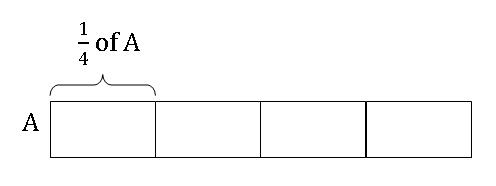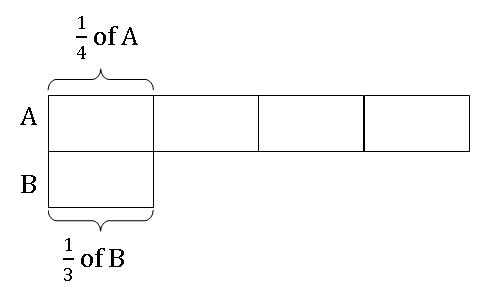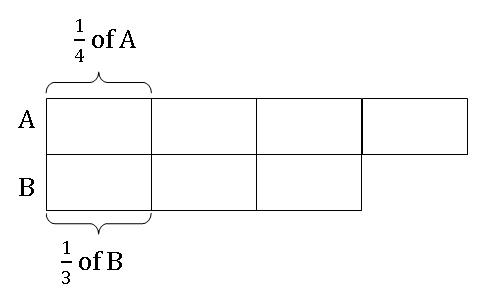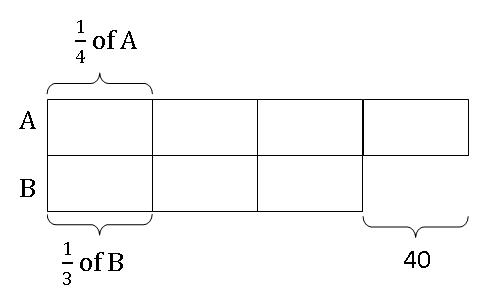The Equal Concept
The Equal Concept is derived from the Comparison Concept . It compares two or more fractions, decimals or percentages, etc that represent equal quantities. In this concept, we first draw a model to represent the first variable given and mark out the part of it that will be equal in quantity to a given part in the second variable represented by a second model.
To illustrate this concept, consider the following question,
1/4 of A is equal to 1/3 of B. A is greater than B by 40. What is the value of A and B?
Step 1: Draw a long bar to represent the whole of A. Divide the bar into 4 equal boxes and label 1 box as the equal part.

Step 2: Next, draw a box below the model of A to represent the part of B that is equal to 1/4 of A, i.e., 1/3 of B.

Step 3: Since the first box of B drawn represents 1/3 of B, we will need to draw another 2 boxes to its right to represent the remaining 2/3 of B.

Step 4: Since A has 4 units and B has 3 units, the extra 1 unit of A must be equal to 40(given in question).

1 unit ----------> 40
3 units ----------> 3 X 40 = 120
4 units ----------> 4 X 40 = 160
Therefore, A is 160 and B is 120.
Go To Top - Equal Concept
If you want us to send you our future Modelmatics eZine that would inform you on the latest article in Teach Kids Math By Model Method, do an easy sign-up below. Subscription is FREE!




